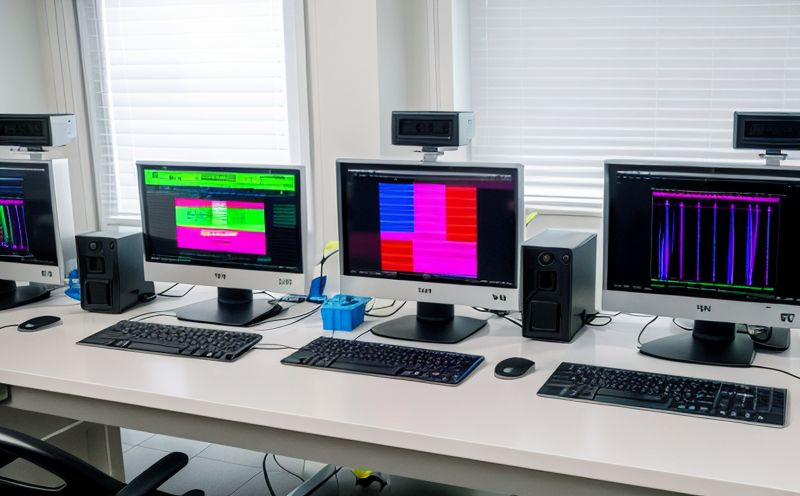ASTM E3206 Contaminant Viral Detection in Biotech Products
The ASTM E3206 standard has been established to address the critical need for accurate and reliable detection of contaminant viruses in biotechnology products. This service is essential for ensuring that these complex pharmaceuticals do not harbor harmful viral contaminants, thereby protecting public health and compliance with regulatory standards.
ASTM E3206 provides a robust framework for detecting potential virus contamination using cell-based assays (CBAs). These assays are designed to identify viruses that can infect cells and cause disease. The standard outlines detailed procedures for preparing samples, conducting the assay, interpreting results, and reporting findings. It emphasizes the importance of using validated methods to ensure consistent and reproducible results.
The ASTM E3206 protocol involves several key steps:
- Sample preparation: This includes diluting the sample appropriately and ensuring it is free from interfering substances that could affect assay performance.
- Cell culture setup: Specific cell lines are used based on the type of virus being targeted. Commonly, cells such as Vero E6 or MDCK (Madin Darby Canine Kidney) are chosen for their sensitivity to a wide range of viruses.
- Assay performance: The prepared sample is added to the cells, and any viral contaminants present will replicate in the cell culture. This replication results in visible cytopathic effects (CPE) or other observable changes that indicate viral presence.
- Results interpretation: Once incubation is complete, the culture is examined for characteristic signs of infection under a microscope or using other imaging techniques. Positive cultures are further characterized to identify the specific virus strain if possible.
- Reporting: Detailed reports are generated documenting all aspects of the testing process and results. These reports serve as critical documentation for regulatory submissions and quality assurance processes.
The ASTM E3206 standard is widely recognized in the biotechnology industry due to its stringent requirements and comprehensive approach. Compliance with this standard ensures that products meet rigorous safety standards, which is crucial given the high stakes involved in biotech pharmaceuticals.
| Sample Preparation | Cell Culture Setup | Assay Performance | Results Interpretation | Reporting |
|---|---|---|---|---|
| Dilution and interference removal | Selective cell lines for optimal sensitivity | Replication of viruses in cells leading to CPE | Observation of CPE or other signs of infection | Detailed documentation of the process and findings |
In summary, ASTM E3206 is a vital tool for biotechnology companies aiming to ensure their products are safe from viral contaminants. By following this rigorous protocol, laboratories can provide reliable evidence that supports regulatory submissions and maintains product quality.
Industry Applications
The application of ASTM E3206 is primarily focused on the biotechnology sector, specifically in the development and production of pharmaceuticals. The following are key areas where this service is utilized:
- Biopharmaceutical Manufacturing: Ensuring that injectable medications like monoclonal antibodies or vaccines do not contain viral contaminants can prevent serious adverse effects.
- Gene Therapy Products: These advanced therapies require stringent safety measures to avoid introducing viruses capable of causing diseases such as hepatitis B or C.
- Vaccine Production: Vaccines must be free from any viral vectors that could lead to unintended infections. The ASTM E3206 protocol helps in maintaining the integrity and efficacy of vaccines.
- Culture Media Development: In vitro cultures used for growing cells need to be virus-free to ensure accurate results and prevent contamination issues downstream.
The ASTM E3206 standard is particularly important for R&D teams working on new biotech products. By adhering to this protocol, they can identify potential viral risks early in the development process, thus saving time and resources that would otherwise be spent correcting issues post-launch.
Eurolab Advantages
At Eurolab, we pride ourselves on offering comprehensive testing services that meet or exceed industry standards. Here are some of the advantages of choosing Eurolab for ASTM E3206 compliant viral detection:
- Expertise and Experience: Our team comprises highly skilled scientists with extensive experience in biotechnology and pharmaceuticals.
- State-of-the-Art Facilities: We operate cutting-edge laboratories equipped with the latest technology for accurate and efficient testing.
- Comprehensive Reporting: Our reports are detailed and easy to understand, providing clarity on all aspects of the testing process and results.
- Regulatory Compliance: Eurolab ensures strict adherence to ASTM E3206 standards, guaranteeing that your products meet regulatory requirements.
We take pride in delivering reliable, accurate, and timely results. Our commitment is to help you maintain the highest quality standards while ensuring compliance with international regulations.
International Acceptance and Recognition
The ASTM E3206 standard has gained widespread acceptance across the globe due to its robust methodology and comprehensive approach. It is widely recognized by regulatory bodies such as the European Medicines Agency (EMA), the U.S. Food and Drug Administration (FDA), and Health Canada.
Regulatory agencies worldwide rely on ASTM E3206 for ensuring the safety of biopharmaceuticals. The standard’s stringent requirements provide a consistent framework that enhances product quality and public health protection globally.
The international recognition of ASTM E3206 reflects its importance in maintaining high standards across borders. Compliance with this protocol ensures that biotech products are safe and effective, fostering trust among consumers and regulators alike.





